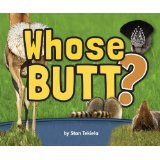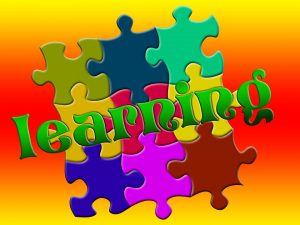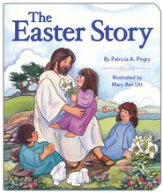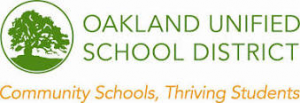You bought your airline tickets awhile back. Suddenly, the departure nears. You arrange for someone to care for your two cats and one dog. You start gathering stuff…your stuff, the kids’ stuff, and more stuff. You pack. And re-pack. And pack. You remind yourself. Don’t forget to pack the kids’ snacks. Oh, and the kids’ favorite Stuffies.
You’re finally done. You breathe a sigh of relief. Then one of your kids has a meltdown because he can’t sleep without his Stuffies. You dig through the suitcases. Where did I pack Patches? After everyone is finally in bed, you confirm your flight.That’s just what I did last night. I gathered stuff. I packed. And re-packed. And packed some more. It fit when I arrived. Why won’t it fit now? Oh yeah, more stuff . . . the mug with colorful birds of the Carolinas, two gifts, and how many books? I decide not to count those. Then I confirm my fight for tomorrow from Asheville to Minneapolis to visit my cousin.
What? That can’t be right. Forty minutes to change planes at O’Hare International Airport? That’s a gigantic airport in Chicago. There’s got to be a mistake.
“United representative, may I help you?”
“There’s a problem with my flight’s layover time.”
“Let me check.” Computer keys clack. “It looks like the times on that flight were changed.”
How did I miss that? “Well, can I get to Terminal 2 in time to board?”
“If you walk directly there and don’t dawdle, you can probably make it.”
Go directly without dawdling? With my brain impairment, I don’t do anything directly. There is no Point A to Point B unless I count Point 1A, Point 2A, and Point 3A. With kids at home, I bet you can’t do everything directly either.
Then there’s my curious personality. I imagine, Oh, look at that adorable stuffed river otter. Off I walk towards the otter. Just like a child, maybe your child, something catches my eye.
Add in the possible distraction of my hungry tummy. I smell Auntie Annie’s pretzels. I haven’t had one of those forever. It must be close by. You know your kids can’t function if they’re hungry and neither can you.
I answer the representative, “No, that is absolutely impossible for me to do. What are my options?”
A later flight is scheduled. I won’t arrive in Minneapolis in time to take the three-hour shuttle to Duluth. My husband kindly finds me a hotel, rearranges a morning shuttle, and contacts my cousin.
After a two hour delay, I arrive in Minneapolis at 12:30 AM. The hotel shuttle promptly picks me up. I’m exhausted, but my curiosity notices a sign. “What’s this national refuge?”
The shuttle driver explains, “It’s a 72 mile refuge corridor. In fact, the Minnesota Valley National Wildlife Refuge Visitor Center is right across the street from the hotel.”
Of all the hotels my husband could have selected, the museum is right across the street from the Hilton? I planned to sleep in. I can sleep on the shuttle instead. I set my alarm to explore.
The concierge directs, “Just go out the front door. Turn left. You’ll see it.”
There it is. A large building, surrounded by grasses, plants, and trees. I walk less than one block, camera in hand.
Click. Click. Click. I roam from exhibit to exhibit.
Click. Click. Click. I’m drawn to the bookstore. No surprise there. Remember, you’re on a time schedule.
A six-year-old boy points and says, “Mom, I want that book.”
I look at the book’s title. Whose Butt? I chuckle. I know a six-year-old grandson who will think that’s hysterical. I bet you know a kid who would laugh at this too. I pick up Whose Butt? More books call my name. Again, I decide not to count.
This is not a coincidence. Lord, thanks for changing my flight. You planned this adventure just for me. I am blessed with another desire of my heart. Nature, photography, and books: all unexpected gifts.
What about you? Has there been a change of plans that resulted in an unexpected gift? Look around you. Whose Butt will you see?

![[flickr.com] Inside OHare Airport Signs](https://fromdiaperstodiamonds.com/wp-content/uploads/2015/05/flickr.com-Inside-OHare-Airport-Signs-300x225.jpg)





![[www.freeimages.com] professor-at-work-1024629-m](https://fromdiaperstodiamonds.com/wp-content/uploads/2015/05/www.freeimages.com-professor-at-work-1024629-m-210x300.jpg)

![[www.stockpholio.com] protractors](https://fromdiaperstodiamonds.com/wp-content/uploads/2015/04/www.stockpholio.com-protractors-300x213.jpg)

 is creating a safe and inclusive classroom environment.
is creating a safe and inclusive classroom environment.![[www.stockpholio.com]-2500644518_4 Creative Commons Bully Free Zone](https://fromdiaperstodiamonds.com/wp-content/uploads/2015/04/www.stockpholio.com-2500644518_4-Creative-Commons-Bully-Free-Zone-225x300.jpg)
 Easter is just around the corner. Last year I didn’t update my Easter Books for Children for my resource page, so this year I covered two years. If you’re looking for books about bunnies, Easter eggs, chicks, and egg hunts, you don’t need any recommendations. These books are prolific. However, if you are looking for Easter books that tell the true Easter story from a Christian perspective, I can assist you.
Easter is just around the corner. Last year I didn’t update my Easter Books for Children for my resource page, so this year I covered two years. If you’re looking for books about bunnies, Easter eggs, chicks, and egg hunts, you don’t need any recommendations. These books are prolific. However, if you are looking for Easter books that tell the true Easter story from a Christian perspective, I can assist you.